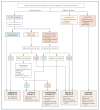The tumor lysis syndrome
- PMID: 21561350
- PMCID: PMC3437249
- DOI: 10.1056/NEJMra0904569
The tumor lysis syndrome
Erratum in
-
The Tumor Lysis Syndrome.N Engl J Med. 2018 Sep 13;379(11):1094. N Engl J Med. 2018. PMID: 30209934 No abstract available.
Figures



Comment in
-
The tumor lysis syndrome.N Engl J Med. 2011 Aug 11;365(6):573; author reply 573-4. doi: 10.1056/NEJMc1106641. N Engl J Med. 2011. PMID: 21830980 No abstract available.
-
The tumor lysis syndrome.N Engl J Med. 2011 Aug 11;365(6):572-3; author reply 573-4. doi: 10.1056/NEJMc1106641. N Engl J Med. 2011. PMID: 21830981 No abstract available.
-
The tumor lysis syndrome.N Engl J Med. 2011 Aug 11;365(6):571-2; author reply 573-4. doi: 10.1056/NEJMc1106641. N Engl J Med. 2011. PMID: 21830982 Free PMC article. No abstract available.
References
-
- Abu-Alfa AK, Younes A. Tumor lysis syndrome and acute kidney injury: evaluation, prevention, and management. Am J Kidney Dis. 2010;55(Suppl 3):S1–S13. - PubMed
-
- Cairo MS, Coiffier B, Reiter A, Younes A. Recommendations for the evaluation of risk and prophylaxis of tumour lysis syndrome (TLS) in adults and children with malignant diseases: an expert TLS panel consensus. Br J Haematol. 2010;149:578–86. - PubMed
-
- Gertz MA. Managing tumor lysis syndrome in 2010. Leuk Lymphoma. 2010;51:179–80. - PubMed
-
- Magrath IT, Semawere C, Nkwocha J. Causes of death in patients with Burkitt’s lymphoma — the role of supportive care in overall management. East Afr Med J. 1974;51:623–32. - PubMed
-
- Krishnan G, D’Silva K, Al-Janadi A. Cetuximab-related tumor lysis syndrome in metastatic colon carcinoma. J Clin Oncol. 2008;26:2406–8. - PubMed
Publication types
MeSH terms
Grants and funding
LinkOut - more resources
Full Text Sources
Other Literature Sources
Medical
